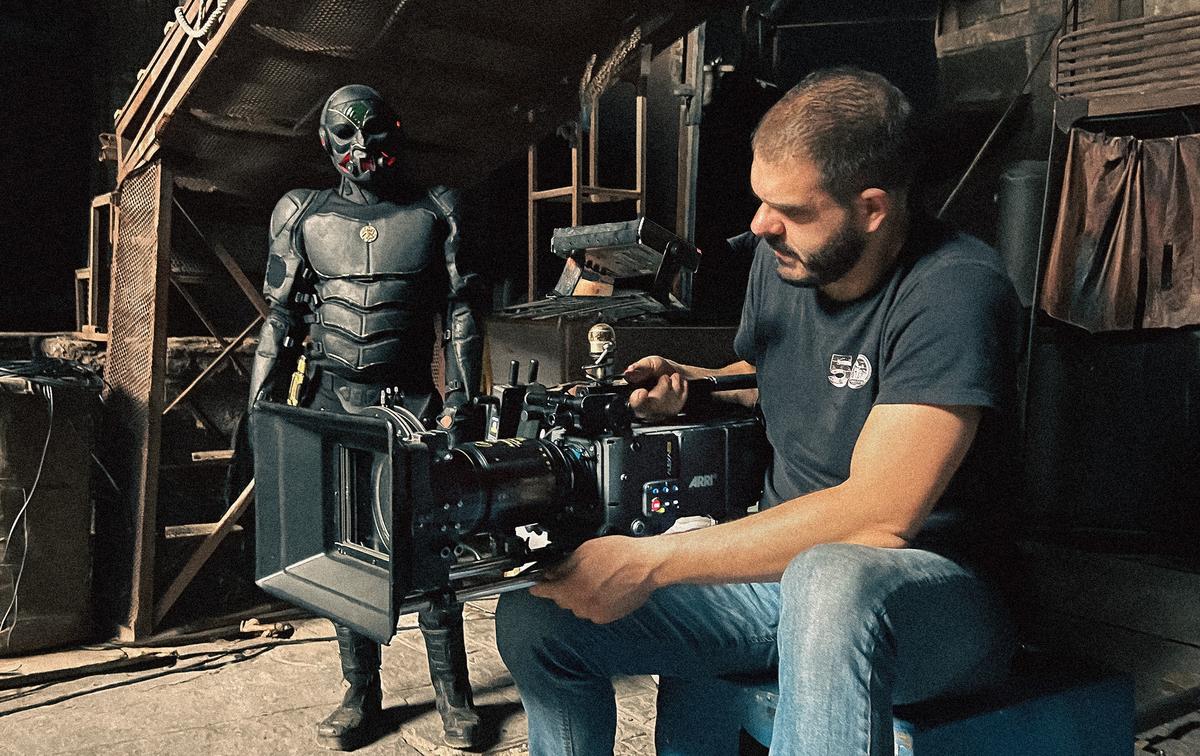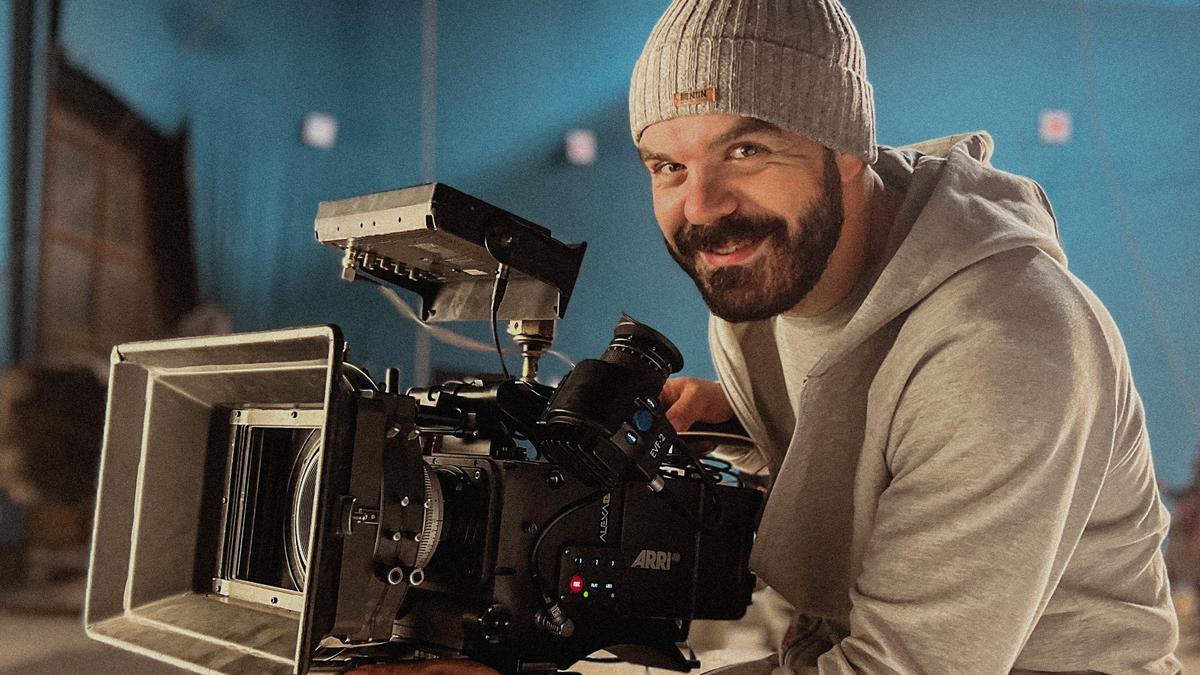One morning, around 6 a.m. in Serbia, Djordje Stojiljikovic got a call from director Rajaram, with whom he had worked Queen queen queen, Science fiction film. Djordje, who lives in Belgrade, is a cinematographer and visual effects artist who has made ad films, shorts, documentaries and feature films. He was told that a big production house in Telangana had enquired about him. “Then I spoke to one of the main producers – Priyanka Dutt (of Vyjayanthi Films), followed by a discussion with the director (Nag Ashwin),” Djordje recalls. “I contacted Zoran, my friend, and asked him if he wanted to go to India with me. He thought I was joking. Soon, we were on a plane from Belgrade to Hyderabad.” The film he became a part of is Kalki 2898 ADAmbitious mythological-science-fiction film starring Amitabh Bachchan, Prabhas, Deepika Padukone and Kamal Haasan.
Ahead of the film’s release on June 27, Djordje explains what went into making it. Edited excerpts from an email interview Hindu,
Before we discuss Kalki 2898 AD.Tell us briefly about your initial interest in cinema. What inspired you to study photography and VFX in Belgrade?
I grew up in Vlasotince in Southern Serbia, Europe. I was surrounded by video and photo equipment at a young age. My father is an information technology teacher and has also worked as an event photographer and cinematographer. I started working with him in the early 2000s, at around 10 years old, using a VHS camera. I soon fell in love with photography and cinematography.
In addition, my brother and I would watch movies with our mother almost every night, which further fuelled my passion for cinema. The internet gave me the opportunity to learn and improve my skills through photography and cinematography forums. The critical feedback I received from these communities was crucial in my growth.
I started making short amateur films with friends from school and basketball. Being from a small town where very few people were interested in this field, I had to learn the post-production processes on my own, including the basics of editing and VFX. My passion to create something similar to what I saw on television pushed me to constantly improve my skills. My early projects also included making television-style documentaries capturing my family’s daily life. Later, I started making music videos for local music bands, which gave me the opportunity to combine visual storytelling with audio.
Before attending university, I edited videos for clients and did motion graphics, animation and basic VFX work. Initially, I thought about studying editing, but I am grateful that I chose to study cinematography at the Camera Department of the prestigious University of Drama Arts in Belgrade. During this journey, the support of my family was crucial.
Your short film, Enema, It has a dystopian setting. Did director Nag Ashwin see this or any of your previous films and approach you? Kalki?
Enema It was built between Kalki’s It still hasn’t been released as I’m currently focusing on monitoring color grades KalkiI don’t have a definite answer as to why Nagi (Naag Ashwin) contacted me KalkiI often joke that I still don’t know why he chose me, but hopefully he made the right decision. I read in an article that he is an expert at finding great collaborators.

Prabhas as Bhairava in ‘Kalki 2898 AD’ | Photo Credit: Special Arrangement
Can you discuss its pre-production process? Kalki,
We spent a lot of time discussing the world Kalki — Who are the inhabitants, how do they live, and how do they fight, what technology do they use, do they sing…? Nagi had already imagined many aspects of this world before joining the team, but the team needed to explore these ideas together to make sure everyone was on the same page.
One of the main aspects of technical preparations was working with miniatures of large-scale locations. These miniatures helped us identify potential problems and plan lighting. I was also involved in the construction of movie vehicles, spending several days in workshops to understand how to illuminate the interiors and determine if additional gaps were needed so that sunlight could come through them.
Collaboration between the director, production designer, costume designer and director of photography is a necessity. I worked closely with production designer Nitin Jihani, discussing each location before production, planning the lighting. I also had many discussions with costume designer Archana Rao to establish the colour palette. The costumes had to be in harmony with the lighting and overall visual tone of the film.
Likewise, music plays a vital role in shaping the emotional landscape of a film. I had the privilege of working with Santosh Narayanan. I remember him coming to the set with some improvisations. Hearing those initial pieces was inspiring; it helped set the mood for that day’s shoot and beyond. This experience cemented for me once again that film is an audio-visual medium. Often, the power of audio, especially music, is a huge source of inspiration for me as a director of photography.
I would also like to thank the producers C. Ashwini Dutt, Priyanka Dutt and Swapna Dutt Chalasani for their support. Their support made extensive pre-production possible.
During this time, I also dived deep into Indian mythology with the help of some crew members. It was a thrilling experience to understand these stories and the spiritual significance of that era, giving me a chance to discover India’s rich cultural heritage. My goal was to create authentic visuals for the mythology and create a realistic, believable version of the future.
The city of Kashi, as shown in the trailer, is a new territory for Indian films. However, the audience here is also familiar with international thrillers and science fiction films. What kind of visual experience did you want to present?
Kashi and its essence has always been a part of the World Heritage. According to the story, it is expected to be densely populated, culturally diverse and globally important in the future. My aim was to authentically portray the ambition and sincerity of such a portrayal.
Kalki 2898 AD This is the first Indian film that depicts the future of an Indian city in this way, which sets it apart from international films made in Western contexts. It provided us with a unique canvas to work on.
My approach is always to create atmospheres and moods that reflect the inner state of the characters and the situations they find themselves in. I focused on crafting a visual language that resonates with the narrative, aiming to provide an immersive and memorable viewing experience.

Djordje Stojiljkovic on the sets of ‘Kalki 2898 AD’ | Photo Credit: Special Arrangement
Why did you choose the IMAX digital camera and the Arri Alexa 65 and Arri DNA lenses?,
This decision was driven by the sheer scale and ambitious vision of the project. The Arri Alexa 65, known for its 6.5k resolution, played a key role in capturing complex, vibrant images suitable for the wide scope intended for the IMAX release, reducing the need for extensive upscaling.
Pairing the Alexa 65 with Arri DNA lenses was a deliberate choice to enhance our visual storytelling. These lenses, crafted from vintage glass from iconic brands such as Mamiya and Hasselblad, bring a unique character and texture to the imagery, distinguished by their distinctive curved bokeh. They reproduce cinematic skin tones, prioritising natural beauty over excessive sharpness. Their ability to handle close-ups intimately and with minimal distortion allowed us to immerse the audience in the emotional state of the characters.
Throughout the process, I was supported by my DIT (Digital Imaging Technician) Sai Krishna Koppolu and my focus puller, Hari Krishna, in managing the digital workflow and ensuring the integrity of our footage.
Kalki It will be screened in urban, semi-urban and rural areas of India, and not all screens may have the best projection system. Did you take this aspect into account?
The Indian audience’s passion for cinema ensures that urban centres across India have some of the best audio-visual projection systems, often even superior to the standards found in parts of the Western world. Even in semi-urban and some rural areas the quality of 2K projection meets these high standards.
Throughout our shooting process and post-production, including colour grading, we have taken care to provide the best possible audio-visual experience across all screening venues in India and internationally, regardless of their technical capabilities.

The trailer shows dark colours ranging from orange-brown to brown-black and sometimes blue. How did you work on the colour palette for different segments and characters?
The process began with depicting sub-worlds within the cinematic universe Kalki 2898 ADEach of these sub-worlds deserved a different visual treatment. We focused on creating specific colour tones, dynamic range and contrast for each section of the film.
It is probably too early to ask, but can you tell us to what extent the Kashi we see in the trailer is a constructed set and what percentage of it is a VFX extension?
When I first arrived on set in 2021, I was stunned to see the sheer scale of the two sets that had already been built. I had seen these sets in remote meetings, but stepping onto them in person was a different experience altogether. As production progressed, each set got even bigger! It was a sight to behold.
I remember well the first time we saw the scale of Kashi. Zoran, my gaffer, and I looked at each other and thought, ‘This is going to be a tough job!’ It was one of those moments when we realised the enormity of what we were doing. The challenge both excited and scared us. I also had invaluable support from my junior gaffer, Nishant Katari. He and his light crew consistently gave their best, braving challenges like stormy weather and blazing sun
To achieve authenticity on screen, most of the sets were built in reality. For Kashi specifically, almost 90% of what you see in the film was physically constructed. Of course, the sprawling cityscape in the distant background owes its grandeur to the exceptional work of the VFX companies. They seamlessly integrated these elements to expand the scope and scale of Kashi beyond what was physically possible. The efforts to bring the streets of Kashi and all other locations to life involved a mix of practical set construction and strategic VFX enhancements. It has been a collaborative effort.
